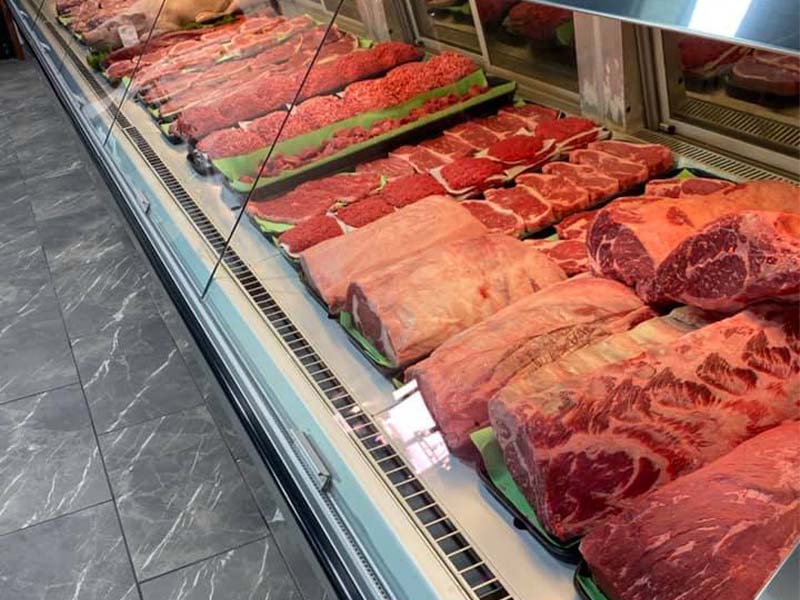Uncover the Art of the Butcher's Cut in a Modern Meat Market
In the ever-evolving landscape of modern-day meat markets, the butcher's cut has transcended its standard roots, combining old-time craftsmanship with contemporary techniques. Today's butchers are not just processors of meat; they are educated craftsmens who stress sustainability and honest sourcing. Their competence in choose and preparing cuts customized to particular culinary requirements supplies an exceptional eating experience. What absolutely sets the modern butcher apart is their capacity to forge a deeper link in between customers and the beginnings of their meat. How do these masters equilibrium tradition with advancement, and what implications does this have for the future of meat usage?
Evolution of Butchery Methods
The evolution of butchery methods reflects a rich tapestry of development and adjustment driven by improvements in technology, changes in consumer need, and a much deeper understanding of meat science. Historically, butchery was a craft passed down through generations, with methods refined over centuries to make the most of return and taste. The commercial change ushered in automation, transforming traditional practices and allowing massive processing.
The mid-20th century saw butchery strategies better fine-tuned by clinical understandings right into muscular tissue biology and meat aging, boosting both tenderness and taste. Innovations like vacuum cleaner product packaging and refrigeration prolonged item shelf-life, permitting butchers to branch out offerings and boost quality assurance. This duration also noted the rise of specialized tools, such as band saws and meat slicers, which boosted precision and efficiency in meat handling.

Electronic systems currently aid in tracking animal provenance and maximizing cuts to fulfill specific consumer preferences. In addition, a resurgence in artisanal butchery has arised, mixing standard abilities with modern-day understanding to provide to consumers seeking ethical and lasting meat alternatives.
Recognizing Meat Cuts
Understanding the details of meat cuts is vital for both butchers and customers seeking high quality and worth. Each cut originates from a different part of the pet, presenting special flavors, structures, and cooking methods - bagley farms meat market edwardsville il. Proficiency of these differences not just boosts culinary experiences but also makes best use of the energy of each carcass. For butchers, exact cuts reflect ability and respect for the craft, making certain very little waste and optimum return.

Recognizing muscular tissue structure is vital; muscle mass utilized a lot more regularly by the pet have a tendency to be tougher and are best matched for slow-moving cooking techniques, while less-used muscle mass, like those discovered in the loin, are more tender and suitable for grilling or roasting. Familiarity with these differences empowers consumers to make educated options, boosting their cooking ventures.
Picking Quality Meat
Choosing the appropriate meat includes even more than just selecting an aesthetically enticing item from the screen. The art of selecting high quality meat needs a critical eye and knowledge of particular features that signify freshness and quality.
Second of all, think about the marbling, which refers to the white flecks of fat within the muscle mass. Proper marbling is an try this web-site essential indicator of inflammation and flavor, as it thaws during food preparation, enhancing the meat's juiciness. Bear in mind, higher marbling usually correlates with superior top quality cuts, such as USDA Prime.
Appearance is another critical element; meat needs to feel solid to the touch, not slimy or overly soft. Additionally, bear in mind the scent. Fresh meat should have a tidy, neutral odor, complimentary from any type of sour or off-putting odors.
Matching Cuts With Cooking Methods

Alternatively, tougher cuts like brisket and chuck roast are rich in collagen, which damages down right into gelatin when prepared gradually. These cuts are ideal for braising or visit homepage sluggish roasting, enabling the meat to tenderize with time and establish deep, intricate tastes. Cuts such as short ribs and pork shoulder make out well with slow-cooking techniques, where prolonged cooking times transform their durable structures into succulent dishes.
Lamb shanks and oxtail, which need extended cooking to tenderize, are excellent prospects for stewing or slow-moving simmering. These techniques coax out abundant, passionate tastes while maintaining wetness. By comprehending the distinct features of each cut, chefs and home chefs alike can boost their culinary creations, guaranteeing each meal is both satisfying and memorable.
The Butcher's Function Today
Browsing the evolving landscape of the modern meat market, the butcher's function today prolongs past simple preparation of cuts. Contemporary butchers are culinary craftsmens, teachers, and advocates for lasting methods. They connect the gap between the farm and the fork by making sure ethical sourcing, understanding animal husbandry, and focusing on transparency in the supply chain. This change shows the expanding consumer demand for high quality over amount, where provenance and pet welfare are critical.
Along with crafting precise cuts, butchers now engage directly with customers, supplying cooking advice and customizing selections to suit private needs and choices. Their experience in meat aging, marbling, and flavor accounts encourages customers to make enlightened decisions, boosting their culinary experiences. This tailored solution exemplifies the butcher's developing function as a trusted consultant in the kitchen.
Additionally, butchers are pivotal in reducing waste, making use of whole pets to develop diverse items such as sausages and stocks. This thorough strategy not just appreciates the animal however additionally lines up with contemporary sustainability goals. By doing this, the contemporary butcher embodies both tradition check out here and technology, adapting to an ever-changing market while preserving the artistry and stability of their craft.
Conclusion
The modern butcher's craft intricately weaves conventional strategies with modern advancements, highlighting lasting methods and ethical sourcing. Proficiency in comprehending diverse meat cuts and top quality indicators equips butchers to provide educated referrals, aligning certain cuts with optimal food preparation techniques. This competence not just raises culinary experiences yet likewise enhances the connection in between consumers and the origins of their food. By recognizing historic methods while welcoming contemporary demands, the butcher's duty remains vital in today's advanced meat market (bagley farms meat market edwardsville il).